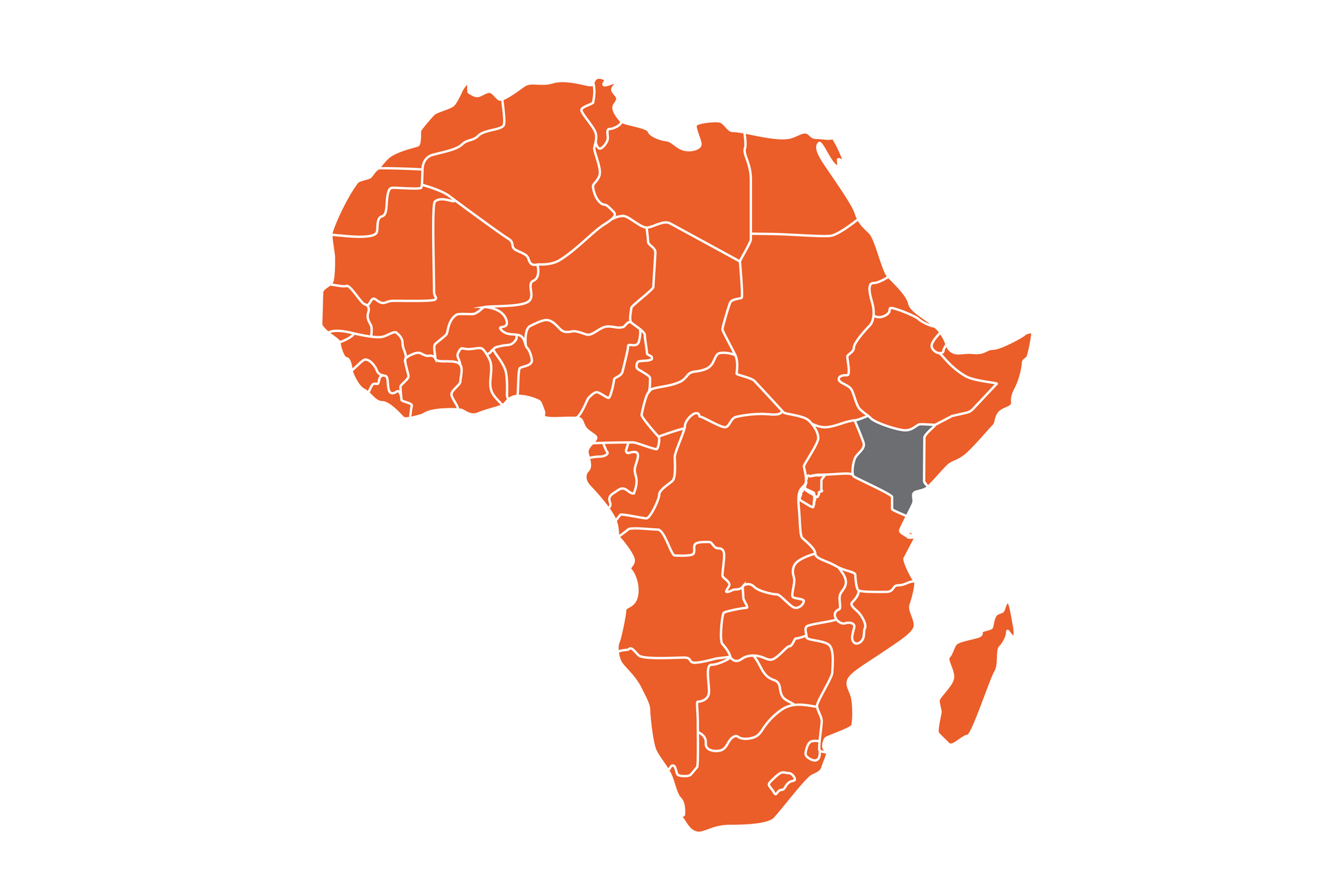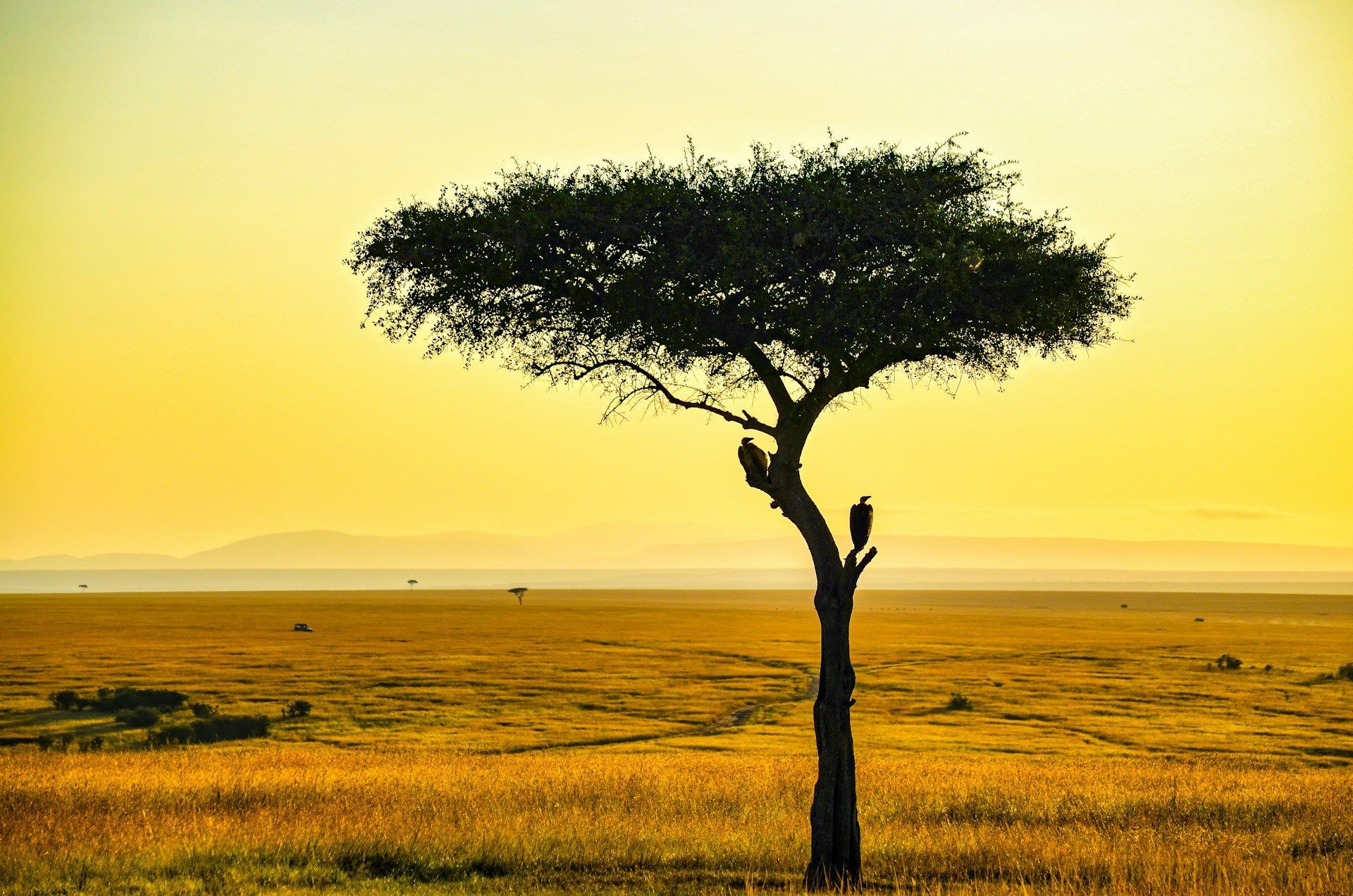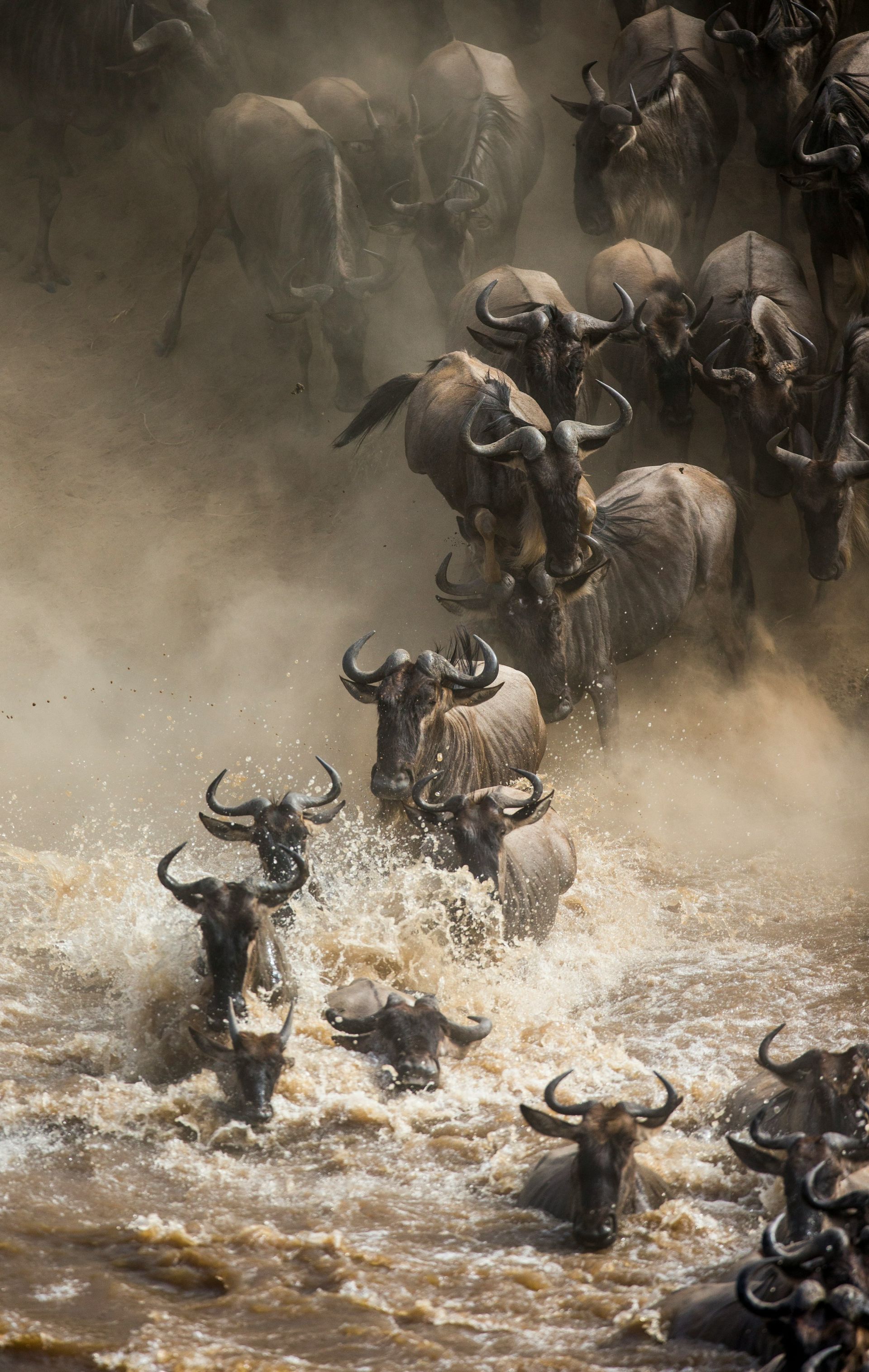Kenya
Kenya
Kenya
Where safari began and still stirs the soul
Kenya’s landscapes feel like they’ve been part of safari storytelling forever – and for good reason. This is where it all began. A place of sweeping savannahs, wildebeest stampedes, flamingo-filled lakes and acacia-dotted plains. But Kenya is more than its legacy. It's a country that constantly reinvents the safari experience – blending tradition with innovation, and wilderness with community.
From the thrill of the Maasai Mara to the stillness of Laikipia’s plateaus, this is East Africa at its most diverse, dynamic and iconic. At Ubon Safari, we craft journeys that go beyond the obvious. Whether it’s your first time to Africa or your tenth, we’ll take you deeper into Kenya’s wild heart – in every season, and on your terms.

Where safari began and still stirs the soul
Kenya’s landscapes feel like they’ve been part of safari storytelling forever – and for good reason. This is where it all began. A place of sweeping savannahs, wildebeest stampedes, flamingo-filled lakes and acacia-dotted plains. But Kenya is more than its legacy. It's a country that constantly reinvents the safari experience – blending tradition with innovation, and wilderness with community.
From the thrill of the Maasai Mara to the stillness of Laikipia’s plateaus, this is East Africa at its most diverse, dynamic and iconic. At Ubon Safari, we craft journeys that go beyond the obvious. Whether it’s your first time to Africa or your tenth, we’ll take you deeper into Kenya’s wild heart – in every season, and on your terms.
Where safari began and still stirs the soul
Kenya’s landscapes feel like they’ve been part of safari storytelling forever – and for good reason. This is where it all began. A place of sweeping savannahs, wildebeest stampedes, flamingo-filled lakes and acacia-dotted plains. But Kenya is more than its legacy. It's a country that constantly reinvents the safari experience – blending tradition with innovation, and wilderness with community.
From the thrill of the Maasai Mara to the stillness of Laikipia’s plateaus, this is East Africa at its most diverse, dynamic and iconic. At Ubon Safari, we craft journeys that go beyond the obvious. Whether it’s your first time to Africa or your tenth, we’ll take you deeper into Kenya’s wild heart – in every season, and on your terms.
Why Kenya always calls you back
This is safari country through and through – home to the Great Migration, the Big Five, and some of the most unforgettable wildlife encounters on Earth. But what makes Kenya linger in the memory isn’t just the game viewing. It’s the drama of the landscapes. The warmth of its people. The sense of being somewhere that pulses with history and movement.
Kenya rewards you in every season. There are peak migration months, yes – but visit in the green season and you’ll see a softer side of the bush, filled with new life, fewer vehicles, and birds in brilliant breeding plumage. Come in the dry season and it’s all action: clear skies, concentrated wildlife, and the kind of game drives that keep you out till after sunset. Whatever the month, Kenya is a year-round safari destination – and one that will never feel the same twice.

Why Kenya always calls you back
This is safari country through and through – home to the Great Migration, the Big Five, and some of the most unforgettable wildlife encounters on Earth. But what makes Kenya linger in the memory isn’t just the game viewing. It’s the drama of the landscapes. The warmth of its people. The sense of being somewhere that pulses with history and movement.
Kenya rewards you in every season. There are peak migration months, yes – but visit in the green season and you’ll see a softer side of the bush, filled with new life, fewer vehicles, and birds in brilliant breeding plumage. Come in the dry season and it’s all action: clear skies, concentrated wildlife, and the kind of game drives that keep you out till after sunset. Whatever the month, Kenya is a year-round safari destination – and one that will never feel the same twice.

Why Kenya always calls you back
This is safari country through and through – home to the Great Migration, the Big Five, and some of the most unforgettable wildlife encounters on Earth. But what makes Kenya linger in the memory isn’t just the game viewing. It’s the drama of the landscapes. The warmth of its people. The sense of being somewhere that pulses with history and movement.
Kenya rewards you in every season. There are peak migration months, yes – but visit in the green season and you’ll see a softer side of the bush, filled with new life, fewer vehicles, and birds in brilliant breeding plumage. Come in the dry season and it’s all action: clear skies, concentrated wildlife, and the kind of game drives that keep you out till after sunset. Whatever the month, Kenya is a year-round safari destination – and one that will never feel the same twice.

Maasai Mara National Reserve
Where legends come to life

The Mara is one of the most iconic safari destinations on the planet – and it lives up to the hype. Rolling plains stretch as far as the eye can see, broken only by lone balanite trees and the movement of animals.
From July to October, this is migration central: millions of wildebeest and zebra thunder across the plains, dodging predators as they go. But the Mara is more than just the Migration. Resident game is excellent year-round – lion, cheetah, leopard, elephant, giraffe, hyena and more.
The light is golden, the skies enormous, and the drama feels constant. The best way to experience it? With a private guide and a base in one of the Mara’s conservancies, where you’ll have access to the action with fewer crowds.
Best for: Migration season, predator sightings, iconic plains scenery.
When to go: July–October for peak migration; November–June for fewer crowds and excellent resident wildlife.


Maasai Mara National Reserve
Where legends come to life

The Mara is one of the most iconic safari destinations on the planet – and it lives up to the hype. Rolling plains stretch as far as the eye can see, broken only by lone balanite trees and the movement of animals.
From July to October, this is migration central: millions of wildebeest and zebra thunder across the plains, dodging predators as they go. But the Mara is more than just the Migration. Resident game is excellent year-round – lion, cheetah, leopard, elephant, giraffe, hyena and more.
The light is golden, the skies enormous, and the drama feels constant. The best way to experience it? With a private guide and a base in one of the Mara’s conservancies, where you’ll have access to the action with fewer crowds.
Best for: Migration season, predator sightings, iconic plains scenery.
When to go: July–October for peak migration; November–June for fewer crowds and excellent resident wildlife.


Maasai Mara National Reserve
Where legends come to life

The Mara is one of the most iconic safari destinations on the planet – and it lives up to the hype. Rolling plains stretch as far as the eye can see, broken only by lone balanite trees and the movement of animals.
From July to October, this is migration central: millions of wildebeest and zebra thunder across the plains, dodging predators as they go. But the Mara is more than just the Migration. Resident game is excellent year-round – lion, cheetah, leopard, elephant, giraffe, hyena and more.
The light is golden, the skies enormous, and the drama feels constant. The best way to experience it? With a private guide and a base in one of the Mara’s conservancies, where you’ll have access to the action with fewer crowds.
Best for: Migration season, predator sightings, iconic plains scenery.
When to go: July–October for peak migration; November–June for fewer crowds and excellent resident wildlife.

Amboseli National Park
Elephants and epic views
Amboseli is classic East Africa. Wide open plains, scattered swamps, and – on a clear day – the snow-capped peak of Kilimanjaro as a backdrop. It’s one of the best places in Africa to see elephants, with huge herds crossing the dust in the golden afternoon light.
Birdlife is excellent too, especially in the wet months when waterbirds flock to the seasonal swamps. The park is small by Kenyan standards, but its cinematic scale and easy wildlife viewing make it a must-see.
Best for: Elephants, Kilimanjaro views, photography.
When to go: January–March and June–October for dry conditions; November–December and April–May for birdlife and beautiful light.
Amboseli National Park
Elephants and epic views
Amboseli is classic East Africa. Wide open plains, scattered swamps, and – on a clear day – the snow-capped peak of Kilimanjaro as a backdrop. It’s one of the best places in Africa to see elephants, with huge herds crossing the dust in the golden afternoon light.
Birdlife is excellent too, especially in the wet months when waterbirds flock to the seasonal swamps. The park is small by Kenyan standards, but its cinematic scale and easy wildlife viewing make it a must-see.
Best for: Elephants, Kilimanjaro views, photography.
When to go: January–March and June–October for dry conditions; November–December and April–May for birdlife and beautiful light.
Amboseli National Park
Elephants and epic views
Amboseli is classic East Africa. Wide open plains, scattered swamps, and – on a clear day – the snow-capped peak of Kilimanjaro as a backdrop. It’s one of the best places in Africa to see elephants, with huge herds crossing the dust in the golden afternoon light.
Birdlife is excellent too, especially in the wet months when waterbirds flock to the seasonal swamps. The park is small by Kenyan standards, but its cinematic scale and easy wildlife viewing make it a must-see.
Best for: Elephants, Kilimanjaro views, photography.
When to go: January–March and June–October for dry conditions; November–December and April–May for birdlife and beautiful light.
Laikipia Plateau
Remote, rugged and remarkably rewarding
Laikipia is where you go when you want space – and lots of it. These vast private conservancies stretch across the highlands, offering a more exclusive and conservation-focused safari experience. It’s known for its innovative lodges, strong community ties, and the opportunity to explore in different ways: on foot, by camel, or even on horseback.
Wildlife here includes rare species like Grevy’s zebra, wild dogs, and reticulated giraffe – plus all the classic favourites. The feeling is different to the Mara: wilder, more off-grid, and deeply connected to the land.
Best for: Exclusive safaris, walking, horseback safaris, rare species.
When to go: June–October and January–March for dry season clarity; November–December and April–May for green landscapes and fewer visitors.
Laikipia Plateau
Remote, rugged and remarkably rewarding
Laikipia is where you go when you want space – and lots of it. These vast private conservancies stretch across the highlands, offering a more exclusive and conservation-focused safari experience. It’s known for its innovative lodges, strong community ties, and the opportunity to explore in different ways: on foot, by camel, or even on horseback.
Wildlife here includes rare species like Grevy’s zebra, wild dogs, and reticulated giraffe – plus all the classic favourites. The feeling is different to the Mara: wilder, more off-grid, and deeply connected to the land.
Best for: Exclusive safaris, walking, horseback safaris, rare species.
When to go: June–October and January–March for dry season clarity; November–December and April–May for green landscapes and fewer visitors.
Laikipia Plateau
Remote, rugged and remarkably rewarding
Laikipia is where you go when you want space – and lots of it. These vast private conservancies stretch across the highlands, offering a more exclusive and conservation-focused safari experience. It’s known for its innovative lodges, strong community ties, and the opportunity to explore in different ways: on foot, by camel, or even on horseback.
Wildlife here includes rare species like Grevy’s zebra, wild dogs, and reticulated giraffe – plus all the classic favourites. The feeling is different to the Mara: wilder, more off-grid, and deeply connected to the land.
Best for: Exclusive safaris, walking, horseback safaris, rare species.
When to go: June–October and January–March for dry season clarity; November–December and April–May for green landscapes and fewer visitors.
Samburu & the northern frontier
Stark, striking and full of surprises
Northern Kenya feels like another world – drier, harsher, but just as rich. In Samburu National Reserve and surrounding conservancies, the Ewaso Nyiro River is a lifeline for wildlife, drawing in elephant, lion, giraffe, oryx and leopard. You’ll also encounter the Samburu Special Five – rare northern species found only here: Grevy’s zebra, reticulated giraffe, Somali ostrich, gerenuk and Beisa oryx.
This is also where culture takes centre stage. The Samburu people are closely involved in conservation, and many guides are drawn from local communities. Expect warm hospitality and meaningful encounters.
Best for: Samburu Special Five, cultural connections, rugged beauty.
When to go: December–March and July–October for best wildlife visibility; April–June and November for quiet camps and soft colours.
Samburu & the northern frontier
Stark, striking and full of surprises
Northern Kenya feels like another world – drier, harsher, but just as rich. In Samburu National Reserve and surrounding conservancies, the Ewaso Nyiro River is a lifeline for wildlife, drawing in elephant, lion, giraffe, oryx and leopard. You’ll also encounter the Samburu Special Five – rare northern species found only here: Grevy’s zebra, reticulated giraffe, Somali ostrich, gerenuk and Beisa oryx.
This is also where culture takes centre stage. The Samburu people are closely involved in conservation, and many guides are drawn from local communities. Expect warm hospitality and meaningful encounters.
Best for: Samburu Special Five, cultural connections, rugged beauty.
When to go: December–March and July–October for best wildlife visibility; April–June and November for quiet camps and soft colours.
Samburu & the northern frontier
Stark, striking and full of surprises
Northern Kenya feels like another world – drier, harsher, but just as rich. In Samburu National Reserve and surrounding conservancies, the Ewaso Nyiro River is a lifeline for wildlife, drawing in elephant, lion, giraffe, oryx and leopard. You’ll also encounter the Samburu Special Five – rare northern species found only here: Grevy’s zebra, reticulated giraffe, Somali ostrich, gerenuk and Beisa oryx.
This is also where culture takes centre stage. The Samburu people are closely involved in conservation, and many guides are drawn from local communities. Expect warm hospitality and meaningful encounters.
Best for: Samburu Special Five, cultural connections, rugged beauty.
When to go: December–March and July–October for best wildlife visibility; April–June and November for quiet camps and soft colours.
Great Rift Valley Lakes
Flamingos, forests and fascinating contrasts
The Rift Valley lakes offer a slower rhythm to the classic safari circuit. At Lake Nakuru and Lake Bogoria, flamingos shimmer in their thousands, while white and black rhino graze near acacia woodland. Further north, Lake Baringo is a hotspot for birding and boating.
These regions blend safari with serenity. You can walk, paddle, cycle, or just watch the light change across the water. It’s a beautiful addition to any trip – especially for photographers and those wanting a break from the game-drive routine.
Best for: Flamingos, rhino, birding, landscape photography.
When to go: June–October and January–March for dry season exploration; November–December and April–May for lush backdrops and breeding bird activity.
Great Rift Valley Lakes
Flamingos, forests and fascinating contrasts
The Rift Valley lakes offer a slower rhythm to the classic safari circuit. At Lake Nakuru and Lake Bogoria, flamingos shimmer in their thousands, while white and black rhino graze near acacia woodland. Further north, Lake Baringo is a hotspot for birding and boating.
These regions blend safari with serenity. You can walk, paddle, cycle, or just watch the light change across the water. It’s a beautiful addition to any trip – especially for photographers and those wanting a break from the game-drive routine.
Best for: Flamingos, rhino, birding, landscape photography.
When to go: June–October and January–March for dry season exploration; November–December and April–May for lush backdrops and breeding bird activity.
Great Rift Valley Lakes
Flamingos, forests and fascinating contrasts
The Rift Valley lakes offer a slower rhythm to the classic safari circuit. At Lake Nakuru and Lake Bogoria, flamingos shimmer in their thousands, while white and black rhino graze near acacia woodland. Further north, Lake Baringo is a hotspot for birding and boating.
These regions blend safari with serenity. You can walk, paddle, cycle, or just watch the light change across the water. It’s a beautiful addition to any trip – especially for photographers and those wanting a break from the game-drive routine.
Best for: Flamingos, rhino, birding, landscape photography.
When to go: June–October and January–March for dry season exploration; November–December and April–May for lush backdrops and breeding bird activity.
Kenya’s coast
Swahili soul and Indian Ocean calm
After your safari, slow down with a few days on the coast. Kenya’s Indian Ocean beaches are rich in culture, history and natural beauty – with warm seas, white sands and atmospheric towns like Lamu and Malindi.
Diani Beach is known for luxury resorts and water sports, while quieter stretches near Watamu and Kilifi are perfect for laid-back retreats. Snorkelling, dhow sailing, seafood feasts and Swahili culture make this a rewarding way to round off your trip.
Best for: Beach breaks, culture, diving and snorkelling.
When to go: December–March and July–October for dry, sunny days; April–June for warm seas and fewer visitors.
Kenya’s coast
Swahili soul and Indian Ocean calm
After your safari, slow down with a few days on the coast. Kenya’s Indian Ocean beaches are rich in culture, history and natural beauty – with warm seas, white sands and atmospheric towns like Lamu and Malindi.
Diani Beach is known for luxury resorts and water sports, while quieter stretches near Watamu and Kilifi are perfect for laid-back retreats. Snorkelling, dhow sailing, seafood feasts and Swahili culture make this a rewarding way to round off your trip.
Best for: Beach breaks, culture, diving and snorkelling.
When to go: December–March and July–October for dry, sunny days; April–June for warm seas and fewer visitors.
Kenya’s coast
Swahili soul and Indian Ocean calm
After your safari, slow down with a few days on the coast. Kenya’s Indian Ocean beaches are rich in culture, history and natural beauty – with warm seas, white sands and atmospheric towns like Lamu and Malindi.
Diani Beach is known for luxury resorts and water sports, while quieter stretches near Watamu and Kilifi are perfect for laid-back retreats. Snorkelling, dhow sailing, seafood feasts and Swahili culture make this a rewarding way to round off your trip.
Best for: Beach breaks, culture, diving and snorkelling.
When to go: December–March and July–October for dry, sunny days; April–June for warm seas and fewer visitors.
Planning your trip
Seasons at a glance
- January–March: Warm and dry – excellent wildlife viewing
- April–June: Long rains – fewer crowds, lush scenery, great birding
- July–October: Dry season – peak game viewing and the Migration
- November–December: Short rains – beautiful light and baby animals
Kenya is a true year-round safari destination – every season has its magic
Quick travel tips:
- Check with your local embassy for visa requirements
- Drink bottled water in remote areas
- Mobile coverage is good in most regions
- Most lodges offer Wi-Fi, though it can be slow in the bush
- Travel with insurance and let your bank know you’re heading abroad
- Tipping is welcomed – ask us for current guidelines
- Respect local cultures – ask before taking photos of people
- Kenya is conservation-minded – avoid purchasing animal products
This is your Kenya
Let’s create something extraordinary
From migration madness to vast savannahs, mountain ridges to mangrove-lined shores – Kenya is one of the most rewarding safari destinations on the planet. And with Ubon Safari, you can experience it in a way that’s personal, immersive and truly unforgettable. Let’s make it yours.
Planning your trip
Seasons at a glance
- January–March: Warm and dry – excellent wildlife viewing
- April–June: Long rains – fewer crowds, lush scenery, great birding
- July–October: Dry season – peak game viewing and the Migration
- November–December: Short rains – beautiful light and baby animals
Kenya is a true year-round safari destination – every season has its magic
Quick travel tips:
- Check with your local embassy for visa requirements
- Drink bottled water in remote areas
- Mobile coverage is good in most regions
- Most lodges offer Wi-Fi, though it can be slow in the bush
- Travel with insurance and let your bank know you’re heading abroad
- Tipping is welcomed – ask us for current guidelines
- Respect local cultures – ask before taking photos of people
- Kenya is conservation-minded – avoid purchasing animal products
This is your Kenya
Let’s create something extraordinary
From migration madness to vast savannahs, mountain ridges to mangrove-lined shores – Kenya is one of the most rewarding safari destinations on the planet. And with Ubon Safari, you can experience it in a way that’s personal, immersive and truly unforgettable. Let’s make it yours.
Planning your trip
Seasons at a glance
- January–March: Warm and dry – excellent wildlife viewing
- April–June: Long rains – fewer crowds, lush scenery, great birding
- July–October: Dry season – peak game viewing and the Migration
- November–December: Short rains – beautiful light and baby animals
Kenya is a true year-round safari destination – every season has its magic
Quick travel tips:
- Check with your local embassy for visa requirements
- Drink bottled water in remote areas
- Mobile coverage is good in most regions
- Most lodges offer Wi-Fi, though it can be slow in the bush
- Travel with insurance and let your bank know you’re heading abroad
- Tipping is welcomed – ask us for current guidelines
- Respect local cultures – ask before taking photos of people
- Kenya is conservation-minded – avoid purchasing animal products
This is your Kenya
Let’s create something extraordinary
From migration madness to vast savannahs, mountain ridges to mangrove-lined shores – Kenya is one of the most rewarding safari destinations on the planet. And with Ubon Safari, you can experience it in a way that’s personal, immersive and truly unforgettable. Let’s make it yours.






